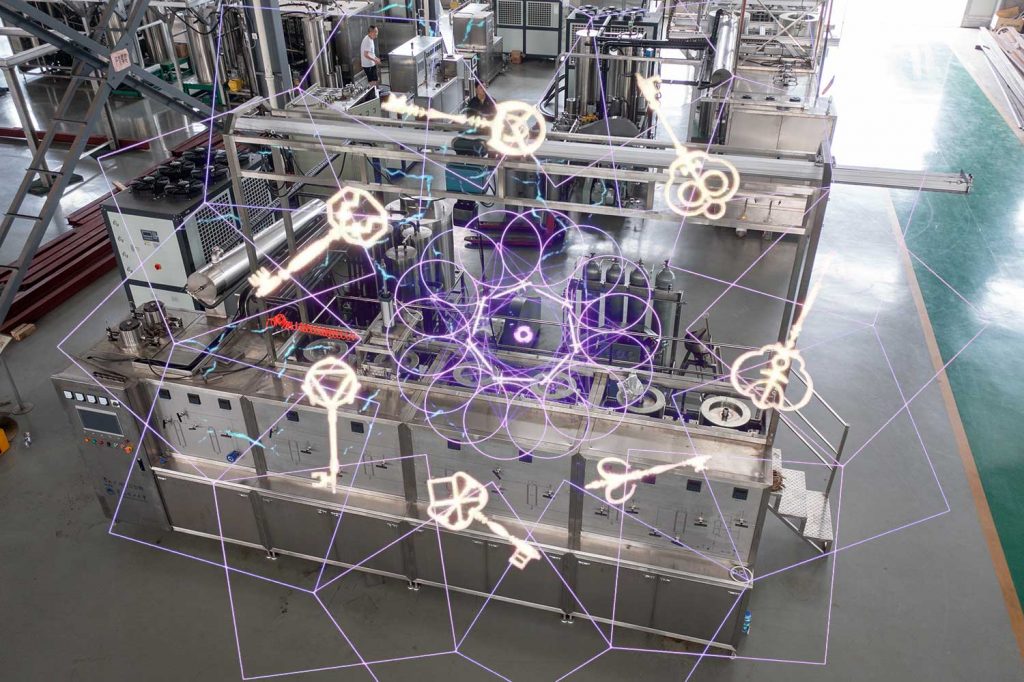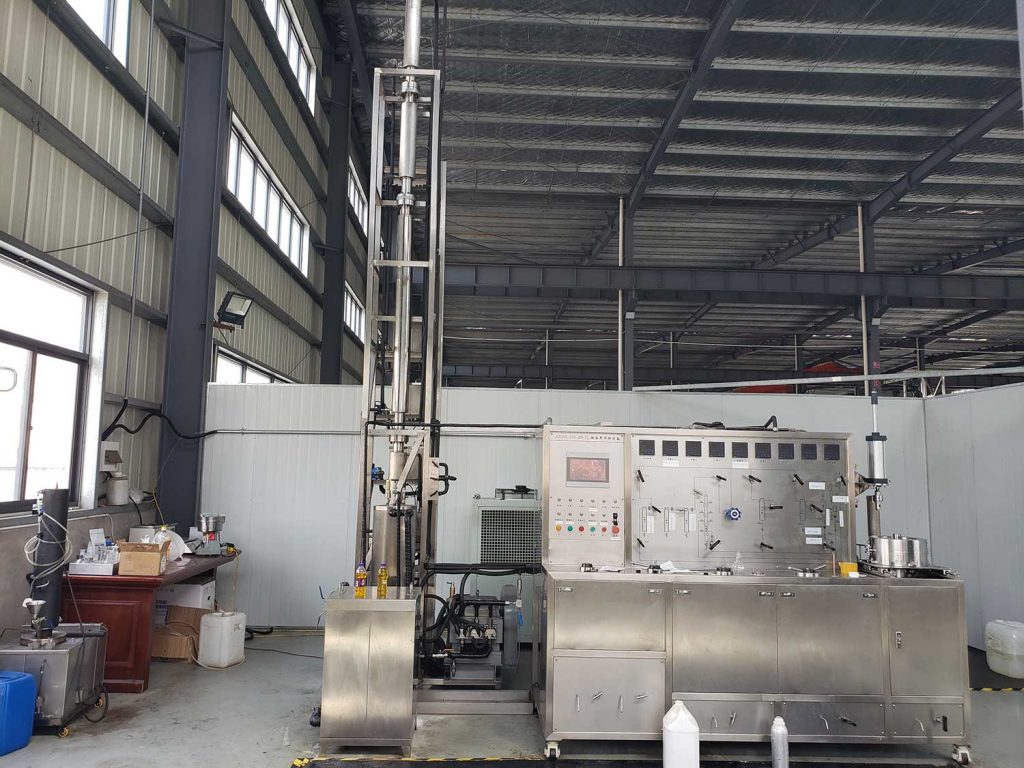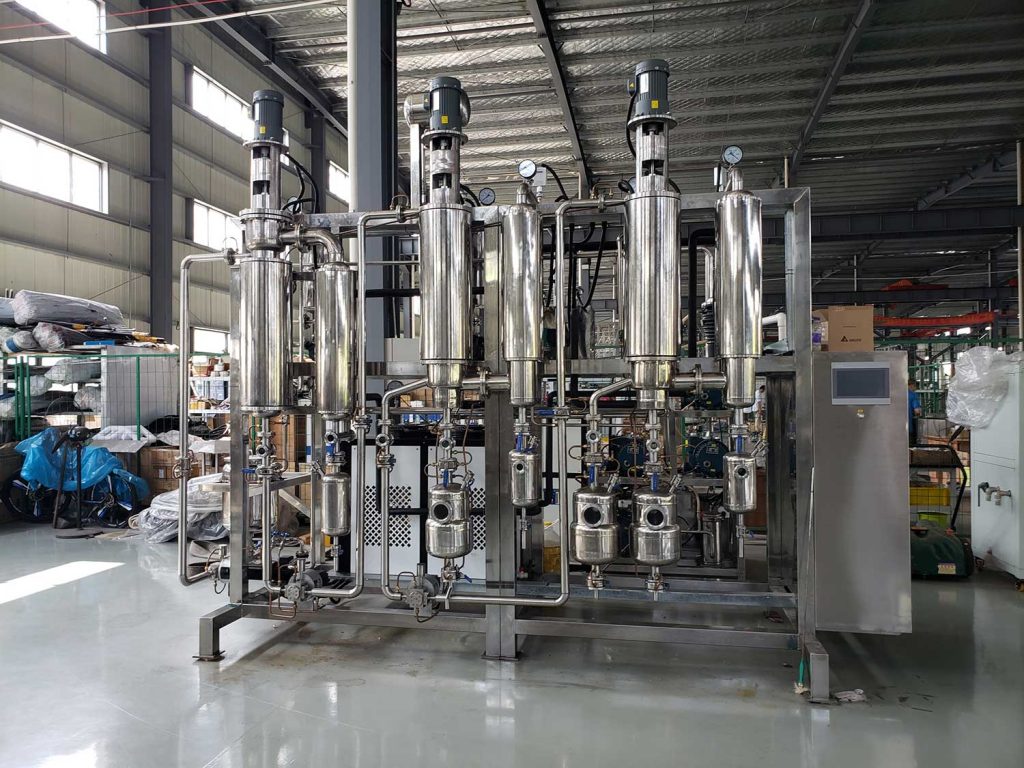In order to further improve the extraction capacity and selectivity of supercritical CO2 for target solutes, researchers have studied a variety of ways to expand supercritical CO2 extraction technology to expand the scope of application of supercritical extraction technology, which is summarized as follows:
Use physical fields to enhance supercritical CO2 extraction
Ultrasonic, high-voltage pulsed electric field, etc.
The extraction effect of supercritical CO2 extraction can be significantly improved by the physical field and energy enhancement technology. For example, the supercritical CO2 extraction of coix seed oil and coix ester by ultrasound enhanced supercritical CO2 extraction, the results show that it is much better than pure supercritical CO2 extraction.
Combination of SFE technology and other separation and purification technologies

The separation and purification technologies currently used in conjunction with SFE technology include: supercritical fractionation (SFF), molecular distillation, adsorption, membrane separation, crystallization, etc.
Supercritical Fractionation (SFF)

The combination of SFE technology and supercritical fractionation technology, that is, a continuous extraction fractionation column with sideline extraction is used in the separation process, and the relative volatility of the components in the mixture is used to make the gas-liquid mixture undergo multiple vaporization and condensation. High-purity volatile components can be obtained in the gas phase, and high-purity non-volatile components can be obtained in the liquid phase to achieve selective separation or concentration, thereby improving the purity of the target product.
Molecular distillation

The combination of SFE technology and molecular distillation technology, that is, the separation process adopts molecular distillation technology. This technology is especially suitable for the separation of high boiling point, heat sensitivity and easy oxide system due to its low distillation pressure, short heating time and high degree of separation. Sexual separation or concentration, thereby improving the purity of the target product.
Adsorption technology
The combination of SFE technology and adsorption technology uses adsorbents to selectively adsorb target components or impurities in the extract to achieve the purpose of improving the purity of the target product. This technology is mostly used for the removal of a small amount of impurities.
Membrane separation technology
The combination of SFE technology and membrane separation technology, that is, the separation process uses membrane separation technology (such as ultrafiltration, nanofiltration, reverse osmosis, etc.) to selectively separate or concentrate the supercritical extract and improve the purity of the target product.
Crystallization
The combination of SFE technology and crystallization technology means that the supercritical extract is further purified by crystallization technology to obtain high-purity products.
Complexing agent
Supercritical CO2 extraction with complexing agent, for example, supercritical extraction is applied to spent fuel reprocessing and nuclear waste treatment (U and lanthanide and actinide elements, such as Pu, etc.), using metal ions to first complex with organic Agents (such as tributyl phosphate, TBP-HNO2) are complexed to form a neutral metal complex (or chelate) that is easily soluble in supercritical fluid, so as to achieve the extraction of metal ions by supercritical CO2.
Microemulsion
The supercritical CO2 microemulsion system is used for the extraction of hydrophilic compounds with large polarity and large molecular weight. For polar compounds that are difficult to extract with the addition of entrainers, such as proteins and sugars, the supercritical microemulsion method can be used to extract, that is, use Appropriate surfactants can form a supercritical fluid-in-water core microemulsion system. For example, perfluoropolyether ammonium carbonate can form a good microemulsion in supercritical CO2, and greatly increase the solubility of water in the system. This system can dissolve bovine serum albumin with a molecular weight of 67,000, which is extracted in supercritical CO2. High molecular weight, poorly soluble drugs opened up new ways.
Summary
Various ways to strengthen and expand supercritical CO2 extraction technology can expand the application range of SFE technology.
Five Extended Applications of Supercritical Fluid Extraction Technology
Supercritical fluid extraction (SFE) technology has been extended to various areas beyond traditional extraction processes. Here are some notable extensions of supercritical fluid extraction technology:
Supercritical Fluid Fractionation
Supercritical fluid fractionation involves the separation and fractionation of complex mixtures using supercritical fluids as the mobile phase. By varying the temperature, pressure, and composition of the supercritical fluid, different components in the mixture can be selectively separated, leading to the enrichment of specific compounds or fractions. This technique has applications in the fractionation of natural products, purification of pharmaceuticals, and separation of complex mixtures.
Supercritical Fluid Purification
Supercritical fluid purification is used to remove impurities or unwanted substances from various matrices. Supercritical fluids, such as carbon dioxide, can selectively dissolve certain components while leaving behind others. This process is particularly useful for the purification of natural products, removal of residual solvents or impurities from pharmaceuticals, and purification of food ingredients.
Supercritical Fluid Adsorption
Supercritical fluid adsorption involves the use of supercritical fluids to selectively adsorb specific components from a mixture onto a solid adsorbent. The supercritical fluid acts as both the solvent and the carrier for the adsorption process. This technique is employed in applications such as the removal of colorants or undesirable compounds from food or beverages and the separation of valuable compounds from complex mixtures.
Supercritical Fluid Extraction-Assisted Reactions
Supercritical fluid extraction-assisted reactions combine the principles of supercritical fluid extraction with chemical reactions. By conducting reactions in the presence of supercritical fluids, enhanced reaction rates, improved selectivity, and unique reaction pathways can be achieved. This approach has been applied in various fields, including organic synthesis, catalysis, and polymerization reactions.
Supercritical Fluid Micronization
Supercritical fluid micronization is a technique used to produce fine particles or micron-sized powders of various materials. In this process, supercritical fluids are used as an antisolvent or a solvent to precipitate or dissolve the material, respectively. The controlled expansion or depressurization of the supercritical fluid results in the formation of fine particles. Supercritical fluid micronization finds applications in pharmaceuticals, food ingredients, and materials science.
Supercritical Fluid Extraction of Metals
Supercritical fluid extraction has been extended to the extraction of metals from various sources, including ores, electronic waste, and industrial residues. Supercritical fluids, in combination with suitable ligands, can selectively extract metals, facilitating their recovery and recycling.
These extensions highlight the versatility and diverse applications of supercritical fluid extraction technology. By utilizing the unique properties of supercritical fluids, researchers and industries continue to explore new possibilities for separation, purification, reaction, and particle formation processes in various fields.
What is supercritical fluid extraction
Supercritical fluid extraction (SFE) is the process of separating one component (the extractant) from another (the matrix) using supercritical fluids as the extracting solvent.
Supercritical CO2 extraction (SCFE) is used particularly in the food, beverage, cosmetics and pharmaceutical industry for extracting natural substances, aromas, fats, oils, waxes, polymers, enzymes and colourants in their supercritical physical state.
CO2 is a natural and environmentally-friendly solvent which has advantages over synthetic and harmful media such as n-hexane when it comes to sustainability.
Supercritical CO2 extraction machine